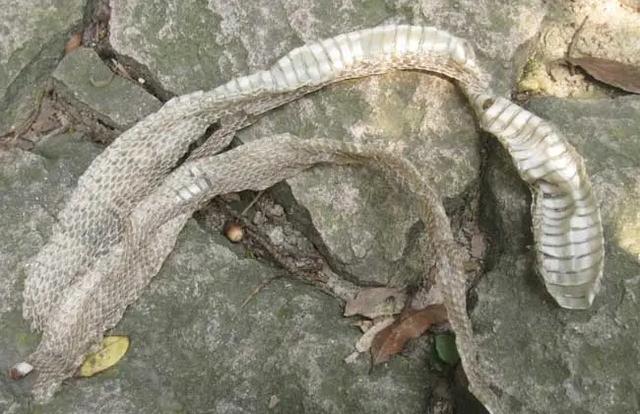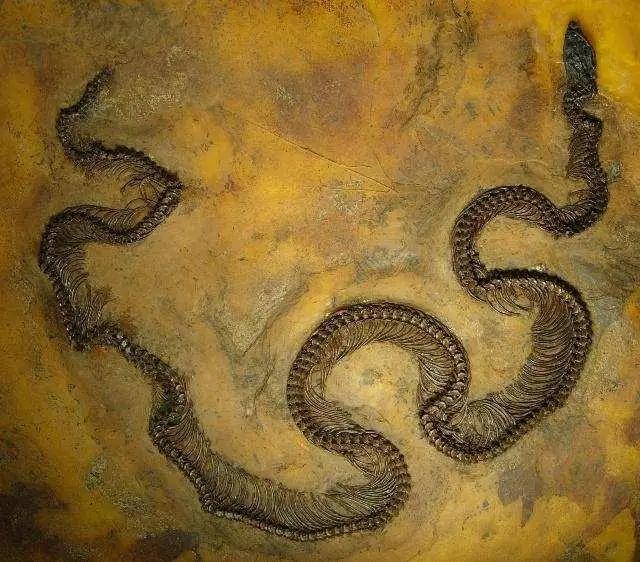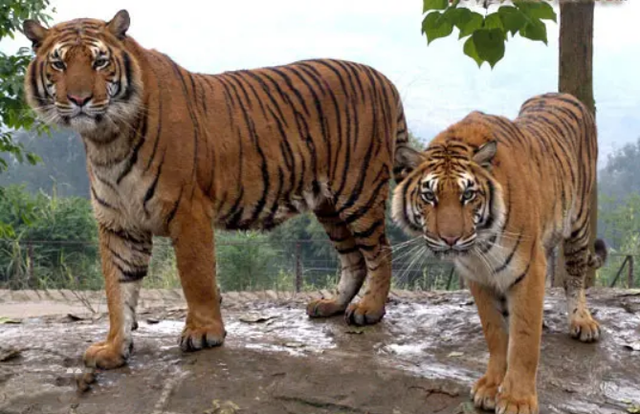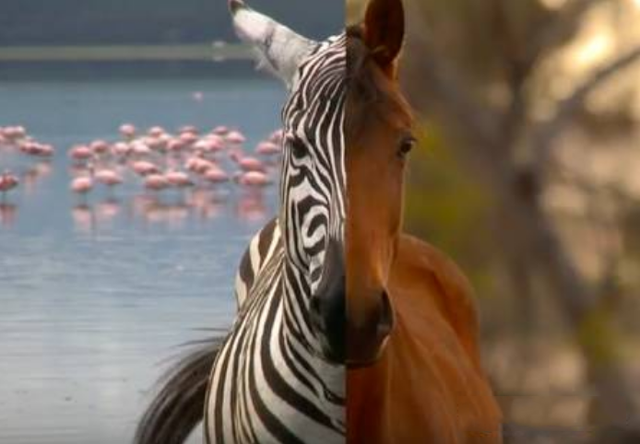As the saying goes, "A snake grows into a python and a python grows into an auger", and while all large snakes are basically pythons, augers are only legendary creatures. However, one characteristic of all snakes is that they can grow for life. So, how big can a python grow indefinitely? If you ignore lifespan, what is the maximum size they can grow? Let's have a chat about this question.

How big can pythons grow?
Anaconda is the common name we give to a snake with a thick, large body, and such snakes are usually found under the families pythonidae and boa constrictors. There are currently 8 genera and 26 different species of snakes in the python family, while there are 19 genera and 75 different species of snakes in the anaconda family. With so many species of python, it would take tens of thousands of words to describe their largest size, so to get a more visual understanding of pythons, let's take the largest snakes under the python and boa families and see how big the known pythons can actually grow.

First let's look at the largest known pythons
Back in 2015, scientists accidentally discovered fossils of ancient snakes while sorting through fossil fragments found decades ago, and by studying the fossils they found that they came from around 167 to 143 million years ago, a discovery that pushes the earliest snakes forward by at least 40 million years, meaning that snakes have evolved from around 100 million years ago.
Over hundreds of millions of years, snakes have evolved into a family of over 3,000 different species. The largest python ever to evolve is the titan python, according to current data.

The titan python is not a snake of the python family, but a snake of the anaconda family, which belongs to the genus titanus. The largest titan python was 14 metres long, weighed more than 1.1 tonnes and was 1 metre in diameter at its thickest point, and from the location of the fossil pit and other animal fossils, it is highly likely that the titan python was known to have been a snake with an average body length of 5 metres. It is likely that the titan python fed on blunt-nosed crocodiles averaging 5 metres in length, as well as on placodiles.
Unfortunately, however, the titan python only survived on earth for about two million years before becoming extinct.

Next, we look at the largest surviving snakes of the python and boa families
Although today's snakes are nowhere near as large as the titan python, there are still some "Pythons" In existence. The largest surviving pythons in the anaconda family are the burmese python and the reticulated python, both of which average over 5 metres in length as adults. Wildlife park, which weighs 8.2m and 183kg.
The largest reticulated python, which is rumoured to be 14.85 metres long, is the famous "Cinnamon", which was found in the rainforests of indonesia and attracted a large number of tourists when its length was announced, and broke the record for the titan record for a giant python. But later, after professional measurements, it was only about 6.5 metres long and weighed less than 100 kilograms.

The largest reticulated python on record is the medusa, which has been measured by guinness world records at 7.67 metres in length and 158.8 kilograms in weight.
The largest python in the family is therefore the burmese python, with a length of 8.2 metres and a weight of 183 kilograms, according to available data.

The largest extant snake of the boa family is undoubtedly the amazonian boa. The amazonian boa is mainly found in the amazon rainforest in south america, and there are many rumours about the boa, especially its size. It is commonly said that the amazonian boa is a giant boa averaging over 10 metres in length and up to 15 metres in length.
In fact, from the data available so far, boas over 6 metres are relatively rare, with the largest individual being 7.5 metres long and weighing 150 kilograms.
Therefore, from the current scientific data, the largest extant snake is the burmese python, followed by the reticulated python, and finally the amazonian boa.

A snake can grow for life. If we ignore the lifespan limit, what is the maximum size it can grow?
01 why can snakes keep growing?
The fact that all snakes do grow for life used to puzzle many scientists, until a research paper published in the journal developmental cell in 2015 uncovered the secret of lifelong growth in snakes. Scientists have discovered through genetic studies of vertebrates that the key factor regulating the development of the vertebrate trunk is the oct4 gene, which is widely found in vertebrates.
If it's all there, why do snakes keep their torsos developing? Through further research, scientists have found that the oct4 gene is more active in snakes than in other animals from the time they are in the egg, and by the time they are born, their oct4 gene stays active longer than in other vertebrates, so it is the activity of this gene that gives snakes the ability to keep their trunks growing.

Clearly the snake's lifelong growth is good for survival, and the fact that it is more genetically active than other vertebrates is also due to a genetic mutation, so what is the benefit of constant growth for snakes to allow this genetic mutation to be retained by natural selection? I believe there are two reasons for this.
First: Snakes need defence. While venomous snakes can defend themselves with their fangs, non-venomous snakes are different, relying more on their bodies for defence, so all snakes have evolved a hard scaly cover, which also helps snakes without legs to walk better (increasing friction and increasing abrasion resistance).
Since the scales have to be hard, it has a poor ability to stretch, unlike our skin which is relatively loose, which led to the snake having to replace its original scales if it wanted to grow.

Second: Getting rid of the distress. According to the defence theory we described above, once the snake has grown to a certain point, it stops growing and there is no need to change its skin. However, snakes crawling on the ground are very vulnerable to parasites, and there is nothing a snake can do once a parasite has become lodged under its scales. Moreover, the lack of feet rubbing against the snake itself causes the scales on its abdomen to wear out, so in order to get rid of parasites and to replace badly worn scales, the snake has no choice but to moult, and the driving force behind moulting is growth.
Lifelong growth is therefore necessary for the survival of the snake, in other words those snakes that cannot grow for life have been outgrown by the best and the worst.

02 ignoring lifespan, how big can snakes grow?
On earth, with the exception of the lighthouse jellyfish, which can theoretically be rejuvenated for 'immortality', all other animals have a lifespan, and snakes are no exception. Overall, snakes live between 10-25 years, with the longest recorded life span being a forest cobra that lived for 29 years.
So, given enough life expectancy, could some of the larger pythons be bigger than an amazonian boa? I don't think so, for one simple reason: Food and temperature.

Firstly, let's talk about temperature. Snakes cannot grow without higher temperatures, so today all snakes that can exceed 5 metres in length live in the tropics, as does the titan boa, which, according to scientists who have studied the time period and geological formations in which it lived, also lived in the tropics, and in an environment that was even hotter than the tropics of today.
And in today's natural environment, the only place that can meet more heat than a tropical rainforest is a desert, but a large python would go to a desert and it would die, due to the high temperature and the inability to regulate its body temperature.

Secondly let's talk about food. Given an unlimited lifespan, pythons will obviously always grow, but once they reach a certain length, they will be limited by food, as growth requires nutrition. We analysed temperature above, and from this analysis we know that large pythons can only continue to grow in tropical rainforests, where there are more water systems to help them dissipate heat (into the water).
However, for large pythons, they must be supported by a large number of large prey, such as the titan python which feeds on a wide variety of large crocodiles, which ensures their daily needs, whereas today, going to the rainforests of africa or south america, which have very limited large prey themselves, plus top predators such as the jaguar in south america, means that even if pythons were given enough life expectancy, they would also be unable to grow very large due to the constraints of temperature and food.

The snake's ability to keep growing is caused by an active oct4 gene in their bodies, and the cause of the abnormally active gene is the result of a genetic mutation that is positively beneficial to the snake's survival, so all snakes with the gene mutation have been retained.
Although snakes can grow all the time, their growth rate slows down as they get older and does not change much for several years (pythons), and the larger they get the more food they need, so even given enough life expectancy a python will be no more than ten percent larger than its normal maximum.









